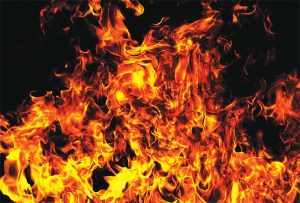Passive fire containment (PFC) systems in high-rise commercial buildings helps support a precious commodity—time—which allows occupants to safely egress a structure during a fire. By slowing the spread of fire and smoke within the building, PFC systems are designed to extend the amount of time available for occupants to exit the building and to increase the time within which firefighters can access the area of fire origin.
Today’s U.S. building codes require the firestopping materials installed in PFC systems to be tested to ASTM E2307, Standard Test Method for Determining Fire Resistance of Perimeter Fire Barriers Using Intermediate Scale, Multi-story Test Apparatus. This standard requires the subjection of firestopping systems to intensive and rigorous testing. Adherence to the code requirement for this testing contributes to the impressive safety record of buildings in the U.S.
Troubling trends
In the absence of a large-scale fire catastrophe, a sense of complacency may be influencing the specification of firestopping materials. In recent years, North America has seen a trend of pre-insulated back pans coming from overseas which contain foreign mineral wool that has not been tested to ASTM E2307. These panels make it difficult for building officials/inspectors to determine if certified mineral wool has been installed.
Fabricated panels—typically unitized curtain walls with spandrels pre-insulated with mineral wool within back pans—produced by some manufacturers, include firestopping materials which are marketed for firestopping purposes,
but contain mineral wool that is not tested in accordance with ASTM E2307, and the code requires firestopping systems that have been tested according to the standard.
To meet code requirements for “tested and listed” firestopping systems, each system must pass rigorous testing by an independent third-party organization such as Underwriters Laboratories (UL). The listing attests to the third-party’s assessment of the assembly’s performance under intense testing conditions. Specifying and installing an ASTM E2307-tested and -listed PFC system is a standard best practice for passive life safety systems in commercial high-rise buildings. The PFC approach relies on a “system,” comprising specific materials—mineral wool insulation, hangers, mullion covers, often times backer/reinforcement support, and firestop sealants—which are designed and tested to work together when installed in the perimeter of the building as part of a PFC system.





